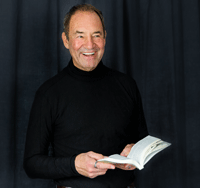Paper Announcements by Roy Barsness (USA)
Therapeutic practices in relational psychoanalysis: A qualitative study
(2020). Therapeutic practices in relational psychoanalysis: A qualitative study. Psychoanalytic Psychology. Advance online publication. https://doi.org/10.1037/pap0000319
As contemporary relational psychoanalytic theory has reworked historical models through a perspectival, postconstructionist lens, new techniques and clinical skills are required. Because there are no single studies specific to the practices of relational psychoanalysis, the purpose of this qualitative study is to determine what a relational psychoanalyst actually does. As evidence-based models continue to dominate the field of psychology, it is necessary for psychoanalysis (and other existential models) to clearly state outcomes of analytic treatment, explain and demonstrate fundamentals of practice, and report how analytic treatment aligns with current research supporting the therapeutic relationship as the key component to successful treatment. By establishing basic fundamentals in the practice of Relational psychoanalysis, this article offers “techniques” with as clear a frame and purpose as other evidenced-based models. This study resulted in 7 core categories common to the practice of a relational psychoanalysis: therapeutic intent; therapeutic stance; deep listening; attending to the there and then/here and now; patterning/linking; repetition/working through; and courageous speech/disciplined spontaneity.
Unsilencing: The Case of Ann
(2020). Other/Wise. International Forum for Psychoanalytic Education, Issue 1: Spring (e-journal). https://ifpe.wordpress.com/2020/05/14/unsilencing-the-case-of-ann/
When speaking creates collisions and silence is in collusion, a new language must be found. Through the use of a case study we look at how the patient and the therapist’s supervisor work to unsilence the therapist – as the therapist herself seeks to find her own voice. The therapist longs to become a mother and the patient longs to find a “good” mother. It seems to be a match made in heaven – or is it? When something feels too good to be true, it usually is, and yet how do we continue to hope, desire and create when all we have known is the story of death, loss and destruction? This is a story of dead babies, mean mothers, bad kids, and a patient and a therapist just trying to form a connection in the midst of such a story. This is a story of hiding, of wanting to be seen, of wanting to be known and of wanting to find home. Co-written with Clarissa Hill, MA, LHMC.
 Roy Barsness, Ph.D.
Roy Barsness, Ph.D.
3121 E. Madison Street
Seattle, WA 98112
Email Roy Barsness

